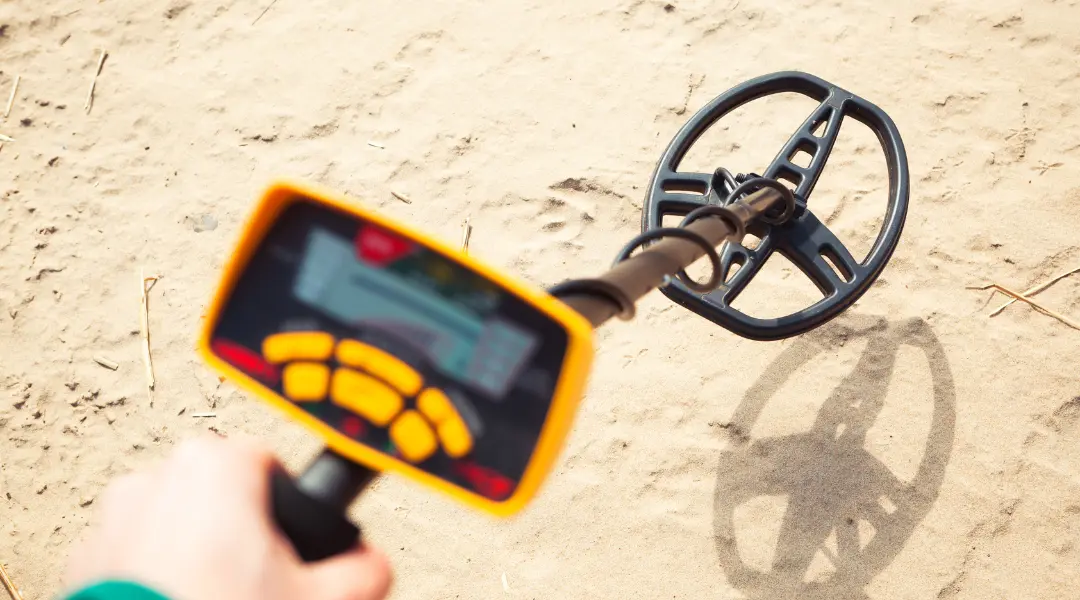Gold has captivated human fascination for centuries, its shimmering allure driving people to search far and wide for this precious metal. Thanks to modern technology, we now have gold detectors that aid in the search for hidden treasure. How deep can gold detectors detect if you’re an aspiring prospector or a curious enthusiast? In this article, we’ll delve into the depths of this question, exploring the factors that influence detection depth and shedding light on the capabilities of these remarkable devices.
Detection Depth Analysis
Detection depth refers to how deep a gold detector can effectively identify the presence of gold or other metallic objects beneath the ground. The depth can vary significantly based on several factors, making it crucial to comprehend the complexities involved.
Factors Influencing Detection Depth
- Frequency of the Detector: Gold detectors operate at various frequencies, with lower frequencies generally offering greater depth penetration. However, lower frequencies might be less sensitive to smaller gold particles.
- Size of the Object: Larger gold nuggets or objects can be detected at greater depths than smaller ones. This is because larger objects create a stronger and more noticeable signal.
- Soil Conditions: The mineral composition of the soil plays a pivotal role in detection depth. Highly mineralized soils can reduce detection depth due to signal interference and attenuation.
- Coil Size and Shape: The size and shape of the detector’s coil also influence detection depth. Larger coils can cover more ground but might sacrifice some sensitivity, while smaller coils can offer enhanced sensitivity but cover less area.
- Detector Technology: Advanced technologies like pulse induction (PI) and multi-frequency detectors can impact detection depth. PI detectors are renowned for handling mineralized soils effectively and maintaining depth in challenging conditions.
- Ground Balance: Properly setting the ground balance on your gold detector is essential. A balanced ground condition helps maximize detection depth by reducing false signals caused by mineralization.
Typical Detection Depths
It’s important to note that giving an exact detection depth for gold detectors is challenging due to the numerous variables involved. However, in optimal conditions, where the soil is less mineralized, and the gold target is relatively large, a mid-range gold detector might reach depths of 12 to 18 inches. High-end sensors with lower frequencies could reach depths over 2 feet for larger targets.
Tips for Maximizing Detection Depth
- Choose the Right Detector: Consider the detector’s frequency, technology, and features. Consult user reviews and expert opinions to find a model that suits your needs.
- Understand Your Environment: Learn about the soil conditions in your prospective search area. The highly mineralized ground can significantly affect detection depth.
- Coil Selection: Depending on your preference for depth versus sensitivity, experiment with different coil sizes and shapes to optimize your detector’s performance.
- Ground Balancing: Understand how to ground balance your detector correctly. This can significantly reduce false signals and enhance depth.
How Deep Do Gold Detectors Penetrate: FAQs
What factors can cause fluctuations in the detection depth of gold detectors?
Detection depth can vary due to many factors, including the soil’s mineral composition, object size, coil technology, and the detector’s frequency. High mineralization can reduce depth, while larger objects and lower frequencies generally result in greater depth. Understanding these variables is crucial for accurate depth assessments.
Why does highly mineralized soil affect the detection depth of gold detectors?
Mineralized soil contains various metallic elements that can interfere with the detector’s electromagnetic signals. This interference weakens the signal’s penetration capability, leading to a reduction in detection depth. Adjusting the detector’s settings to account for the mineralization and achieve optimal performance is essential.
How does the choice of coil impact the detection depth of a gold detector?
The coil’s size and shape significantly influence detection depth. Larger coils are generally better for deeper detection but might sacrifice sensitivity for smaller targets. Smaller coils offer increased sensitivity but might have limitations in depth. Balancing between these factors is essential to achieving the desired detection depth for specific search conditions.
Can weather conditions affect the detection depth of gold detectors?
Weather conditions can indirectly impact detection depth. For example, wet or humid soil might contain higher mineral content, leading to decreased depth. Similarly, extreme temperatures could affect the detector’s electronics and overall performance, potentially influencing the accuracy of depth readings.
How does ground balancing contribute to maintaining consistent detection depth?
Ground balancing is a crucial step in optimizing detection depth. It helps the detector filter out signals caused by mineralization in the soil, allowing it to focus on actual metal targets. Improper ground balancing can result in false signals and reduced depth. Calibrating the detector according to the specific soil conditions can enhance depth accuracy.
Final Words
In the quest for hidden treasures, gold detectors serve as invaluable tools. The question of how deep gold detectors can detect is multifaceted, influenced by frequency, object size, soil conditions, coil technology, and more. While providing an exact detection depth is complex, understanding these factors empowers prospectors to make informed decisions. Whether you’re a seasoned prospector or a novice enthusiast, remember that the capabilities of a gold detector are deeply intertwined with the elements it encounters beneath the earth’s surface. So, go ahead and explore the depths – you might just uncover the glittering rewards you seek.

